From ‘Jennifer’s Body’ To ‘Pearl’ – 6 Horror Movies To Stream This Halloween That Celebrate The Feminine Grotesque
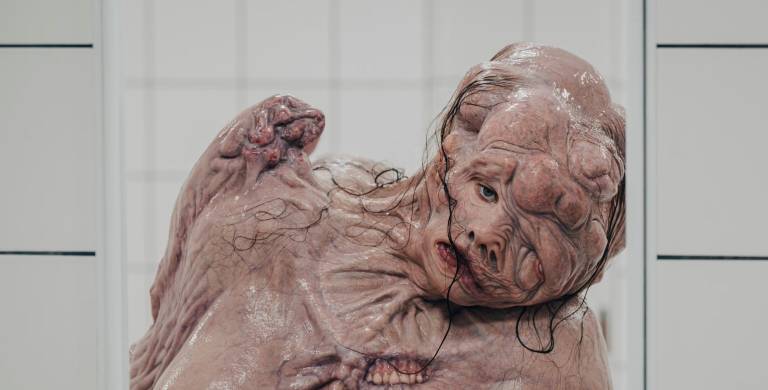
Every generation has to find a new way to be afraid of women.
They called it hysteria in the 1940s, obsession in the 1960s, and in the 2000s it’s the high-school sweet spot of “crazy ex-girlfriend.” In horror, it’s something a wee bit bloodier, and more honest. I call this, the feminine grotesque. It’s the place in film where the performance of femininity breaks and something wild pours through. Where beauty curdles into fury, where desire is too big to be contained by courtesy or reason.
The feminine grotesque occupies the quiver between beauty and rot. It’s the perfume-scented violence of a woman smiling at you while she cuts your throat, the flash of fury lurking beneath the eyeliner. It’s the acknowledgement that the same traits which make women “valuable” to the world sensitivity, sex appeal, loyalty…. are the same traits that render them monstrous when they are taken to an extreme.
Jennifer’s Body (2009)
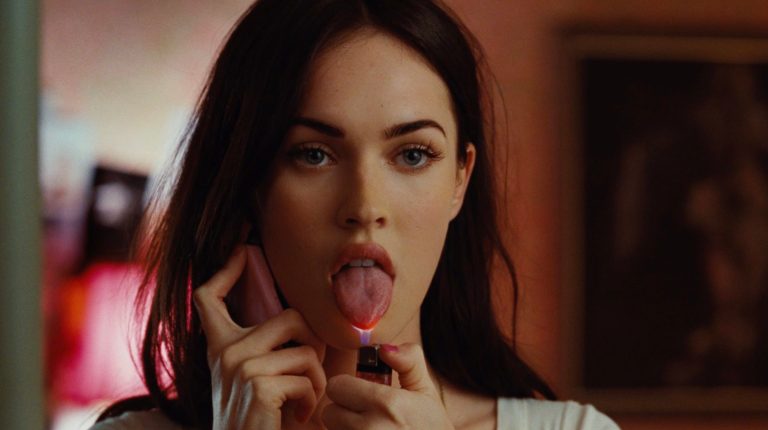
On the surface, many argue 2009’s Jennifer’s Body is a dumb, gross, and quasi-ridiculous teen horror movie. Beneath the eyeliner and the bite marks, hiding in the deceptively trashy folds of the screenplay, is one of the best, smartest, most wickedly incisive examinations of girlhood and hunger that’s ever been shown on screen. Jennifer Check (played by Megan Fox, like most great things of the mid-00s) is both prey and predator, her body quite literally the sacrificed vessel for male enterprise. When she comes back starving, angry, and glorious, she is the monstrous, physical embodiment of what women look like when they take the power that was taken from them back.
Diablo Cody’s screenplay drips with gore and girl wrat skewering the absurdity of purity culture and the quiet toxicity of friendships between women conditioned to compete for male attention. The horror here is not only supernatural, but social. It’s the horror of desire, of being desired, and the understanding that the two can never coexist without a healthy dose of violence.
You can stream this movie for free on Tubi.
Pearl (2022)

“Please, I’m a star.”
Pearl is Mia Goth’s glittering psychosis told in technicolor. This movie serves as a horrific fable of repression, a story of womanhood as suffocation and decay. Set in 1918 but almost entirely timeless, it traces a farm girl’s devolution from repressed obsession to axe-wielding maniac. Pearl is stuck in stasis. Her father is disabled, her mother cruel, her husband at war. Their farm is dying, and Pearl’s desire to be seen, to be adored, to be chosen is a suffocating weight she can no longer bear. So she cuts loose, giving a performance of her own liberation… with the flourish of an axe of course!
Pearl, is gothic horror transforming the “woman’s picture” into macabre nightmare. Its gauzy pastel prettiness a violence in and of itself. Written and directed by Ti West and Goth, the film is a shrine to the holy madwoman who can no longer contain her desire to be more than merely alive. The final shot… that wide, wide, manic smile, is the face of female repression giving way to divine lunacy.
You can stream this movie on HBO Max.
The Substance (2024)
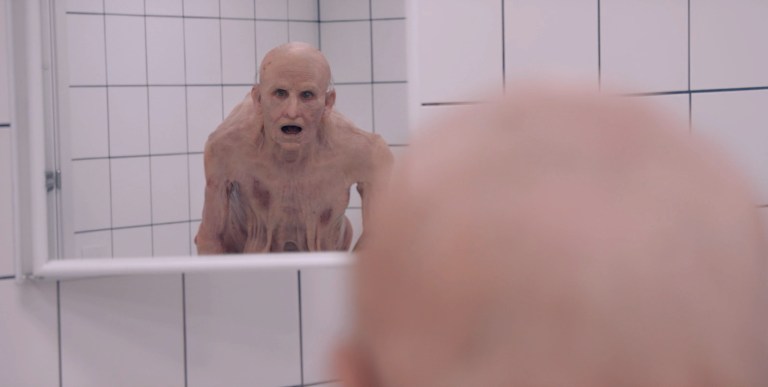
Coralie Fargeat’s The Substance is body horror weaponized against the male gaze itself. Demi Moore plays a faded celebrity who injects herself with an experimental serum that births a younger, “perfect” version of herself (Margaret Qualley). These two halves of a single identity become trapped in a horrific cycle where youth devours age and beauty consumes its own existence.
This becomes a madwoman’s laboratory, a body dissected, a soul split by societal demand. The makeup mirror becomes a morgue light. The instruments which serve beauty purposes including physical appearance, clothing and makeup have transitioned from protective armor to destructive tools that mutilate. It’s grotesque, yes, but it’s also an ecstatic act of exposure. Fargeat forces us to witness what womanhood looks like when it stops performing.
You can stream this movie on HBO Max.
The VVitch (2015)
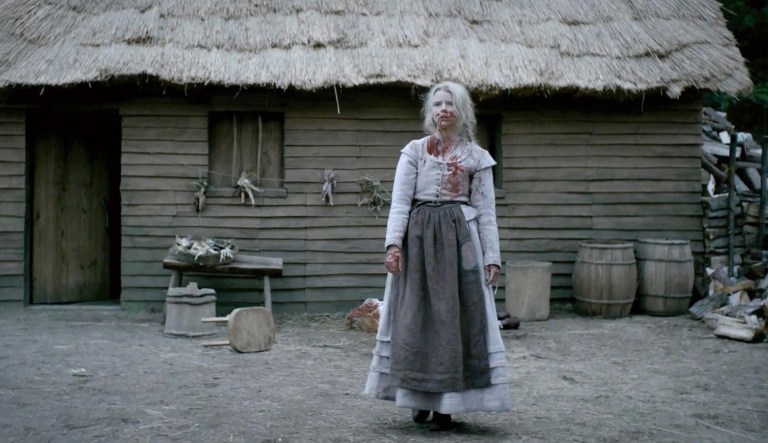
Robert Eggers’ The VVitch is the origin myth of the madwoman not as a victim but as prophecy. The film reimagines the Puritan nightmare not as a story of evil encroaching upon innocence but of repression finally giving birth to truth. Thomasin (Anya Taylor-Joy), the eldest daughter of an exiled Puritan family, lives on the trembling edge of adolescence: her desires waking, her body changing, her voice still caught between obedience and defiance. Her mother fears her. Her father can’t see her. The film places her in the suffocating crucible of early colonial patriarchy, where the slightest trace of female autonomy reads as sin.
The film’s infamous question “Wouldst thou like to live deliciously?” lands as both temptation and sacrament. It is the first time anyone has offered Thomasin a choice. Her “yes” is a reclamation of the body and the self that Puritanism tried to annihilate. When she strips off her shift and walks into the woods, her nakedness is not vulnerability but rebirth. The forest the space of all things deemed wild, sensual, and forbidden accepts her. Her levitation at the end is not a surrender to darkness but an ecstatic refusal of the world that made her small.
Now streaming on HBO Max.
Girl, Interrupted (1999)
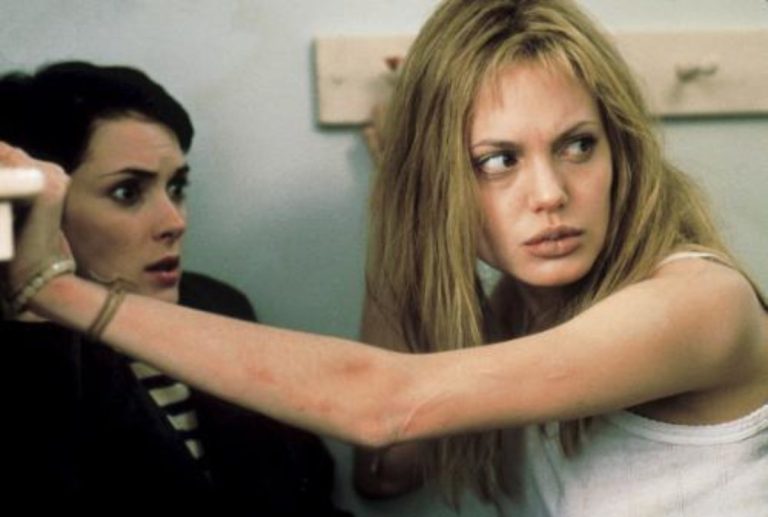
Girl, Interrupted takes place in a psychiatric ward in the late 1960s. It plays like a costume drama of pathology. Its women Susanna (Winona Ryder), Lisa (Angelina Jolie), Georgina (Clea DuVall), Polly (Elisabeth Moss), and Daisy (Brittany Murphy), are all symptoms of a world that cannot contain their intensity. The asylum acts as a kind of microcosm of the social order, a place where unruly women are reclassified as patients, and their transgressions are medicalized, their passion diagnosed as disease.
Lisa in particular presents as charming and cruel, magnetic and self-destructive, where she wields her madness as a performance, as a means of survival, but sadly even Lisa’s rebellion is contained by the system, the spectacle made entertainment of her disorder. What I personally find most devastating about Girl, Interrupted is its ending. Susanna “recovers,” and returns to society, while Lisa is left in the institution. It’s the same old false resolution of the madwoman’s tale…integration without future. The film gestures toward healing, but cannot conceive of what thriving might look like. The real tragedy here is not in madness itself, but in the world’s refusal to let women live with their madness, to love it, to find art and power inside it, and to move on.
You can stream this for free on Pluto!
Black Swan (2010)
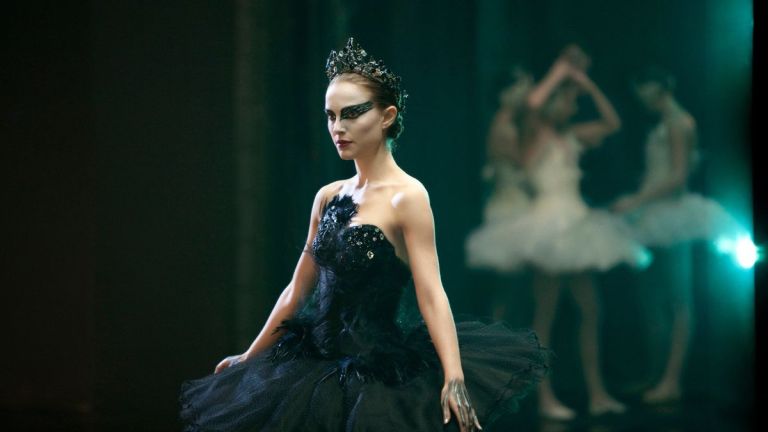
Darren Aronofsky’s Black Swan may be the purest form of the feminine grotesque in recent memory. A ballet of mirrors, doubles, sex, and decay where its heroine is caught in the throes of absolute obsession. Nina Sayers (Natalie Portman) is a woman possessed. Everything is about becoming, about perfecting her performance. She wants to be good, pure, and corrupt. The body is discipline, the mind an instrument to be shattered. Erotic and grotesque, each rehearsal is destruction. Aronofsky films the body as a site of both eroticism and horror. Skin cracks and peels, nails split and bleed, feathers sprout where there should be none. The grotesque is the price of transcendence.
Nina’s hallucinations make manifest her inability to differentiate self and other, victim and rival, performance and possession. The final act, where she becomes the Black Swan onstage, is a moment of ecstatic annihilation. “I was perfect,” she whispers, bleeding out under the curtain. It is the central paradox of the feminine grotesque where in the madwoman’s perfection she finds self-actualization, but only through the obliteration of self. In this case, through Nina’s dying eyes, we see all the cinematic madwomen who have come before her… Bette Davis, Joan Crawford, Isabelle Adjani, and all the real women who have been burned alive for the sin of wanting too much.
Streaming now on Hulu.
Further reading: